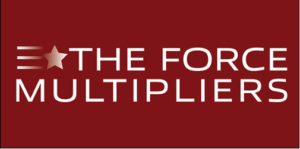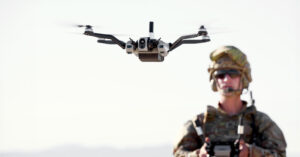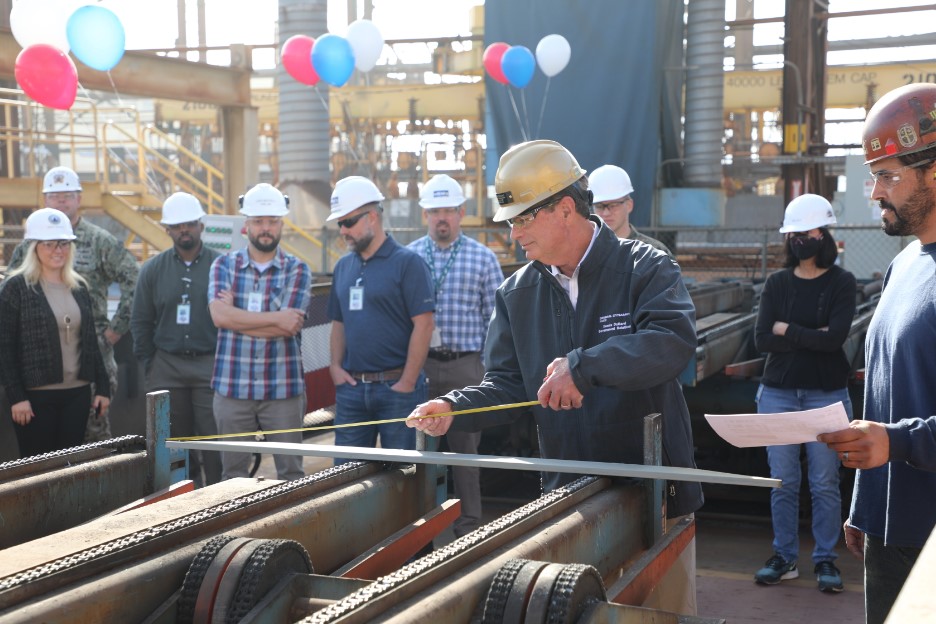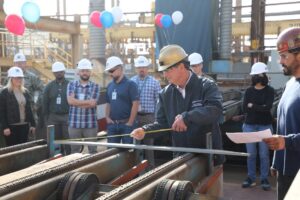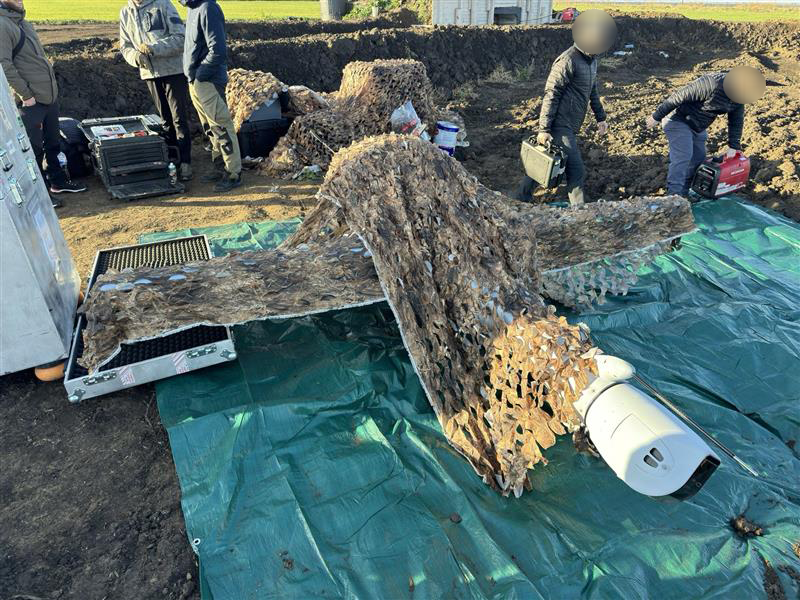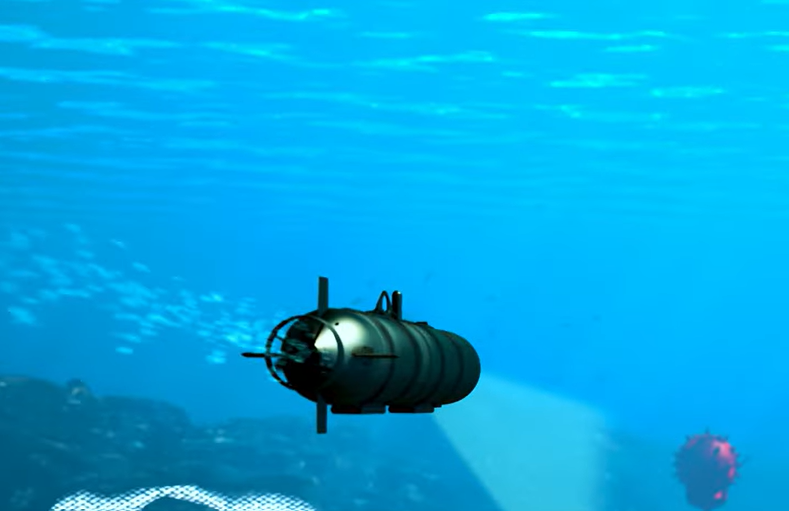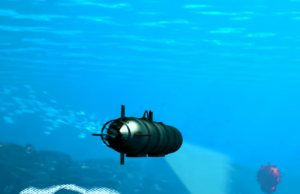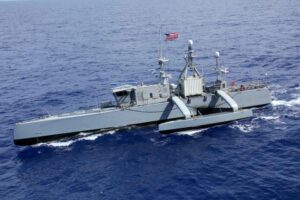In this monthly column, Defense Daily highlights individuals from across the government, industry and academia whose efforts contribute daily to national defense, from the program managers to the human resource leaders, to the engineers and logistics officers.
Adam Maruyama is Everfox’s Field CTO for Digital Transformation and AI. In this capacity, he advises the organization on using trusted, assured technologies to bring the latest technological innovations into their environments in a secure manner. Previously, Adam served more than 15 years in the US Intelligence Community supporting cyber and counterterrorism operations, including co-leading the drafting of the 2018 National Strategy for Counterterrorism.
How did you get involved in the defense industry or community?
I joined the Intelligence Community in the shadow of 9/11. Seeing the early morning broadcasts of the towers while in my home state of Hawaii, then driving to school and seeing Pearl Harbor in the distance, galvanized my decision to focus on national security. I joined the National Security Agency’s Stokes Scholarship program, which provided me with the opportunity to study at Georgetown University in preparation for a career as an Intelligence Analyst.
While working at the NSA, I focused on counterterrorism and cyber operations at all levels. This included supporting individual operations in warzones, leading a team in the NSA’s Counterterrorism watch center, and co-leading the development of the 2018 National Strategy for Counterterrorism as part of the National Counterterrorism Center. These experiences, and my focus on the fundamentally asymmetric disciplines of cyber and counterterrorism, provided me with invaluable insights into customer needs and how we, as an industry, can address emergent cyber threats.
What are some challenges you faced working through your career?
As a government employee, I always found it difficult to reconcile the fast pace of innovation with the necessarily deliberative pace at which the government moves. Industry can often move faster than their government counterparts when it comes to agile development of disruptive technologies. On the other hand, the government also plays a vital role in rigorously assessing and implementing those technologies to create secure ways to use state-of-the-art technology. In many cases, the government’s assessments’ results and their implementation best practices can trickle back to industry, creating a more secure defense and security ecosystem on both sides of the public-private partnership. When done right, it’s a virtuous cycle.
Did you feel like you always had sufficient mentors and leaders to help guide you? Why/why not?
Like most people, I’ve had periods of my career characterized by a lack of solid leadership and mentorship. I’ve also been fortunate enough to have periods where leaders and mentors lifted me up. Some of the toughest times in my career were in organizations that focused on production rather than people. In these environments, I lacked a sense of meaning in the work and a vision of what was next in my career. Trying not to disrupt the flow of work also made it hard to seek out mentors in these organizations, especially for high-performing junior employees worried about bothering more senior folks with requests for advice that weren’t relevant to the tactical work of the moment.
On the flip side, I had the privilege of serving under some amazing leaders and mentors who taught me about the power of a truly empowered organization. In these organizations, “I trust your judgment” is far more than an aphorism and abdication of responsibility for a decision – it’s an endorsement of experts’ views on critical subjects and a promise that the leader will not only defer to them but also actively champion them. Radical empowerment creates better outcomes because it forces everyone in the organization to develop thoughtful, rigorous positions, knowing that they carry weight and will not be easily cast aside.
How do you work to be a mentor yourself to younger counterparts?
I think the most important part about being a mentor is making it clear that you’re available and that mentorship is not a burden. As I mentioned earlier, it’s very easy for a junior colleague to think that asking for advice or mentorship is bothersome. Doing things like setting a regular cadence for mentorship and occasionally checking in on our professional protegees helps to break that perception.
Another key part of my approach as a mentor – one that I’m not always as successful with as I’d like to be – is that mentors should be thought partners, not solution providers. Unless there’s a serious ethical, legal, or regulatory risk involved, I try to help my proteges analyze all dimensions of potential decisions and then support them whether or not their decision is the one I would have made myself.
What does it mean to be successful in your career field?
I’ve long believed that cybersecurity is a whole-of-society issue. Success in cybersecurity doesn’t just mean helping provide cybersecurity solutions to the government entities, although that’s certainly a key part of it. Success in cybersecurity means understanding the kind of tactics our adversaries use to surveil and disrupt the services that underpin day-to-day life in America – Volt Typhoon’s intrusions into critical infrastructure and Salt Typhoon’s intrusions into telecoms come to mind. It is our duty to convince the government, corporations, and individual citizens to adopt the disruptive technologies necessary to counter these threats. This change isn’t always easy, but, in my view, it’s necessary.
What are some of the under-appreciated positions in the defense field, the unsung heroes or essential cogs in the machine that help the job get done with less recognition?
A lot of credit is given to the operators who make things happen and even the collectors and analysts who feed those operations. The support folks who keep systems running and implement the guidance to protect against the threats that analysts warn us about are the unsung heroes of our defense and security apparatus. It’s very easy to complain when things go down, but especially as technology becomes more complex and the threats to our systems become more advanced, keeping those systems secure and operational is a much harder and more complicated job than most people may realize.
How can the industry improve in promoting these individuals and building them up?
We’ve already begun to elevate technology leaders like CIOs and CISOs in government, but we can do a lot more for our working-level colleagues who keep these systems running all day. Many defense and security organizations have a tendency to clamor for urgent action on mission critical systems, and Murphy’s Law ensures those systems often go down at inopportune times. It’s critical to provide the folks trying to fix those systems with grace and patience rather than pressuring them for every millisecond of uptime. Those folks are invisible 99.9% of the time when the systems are working, and a slight hiccup in connectivity or functionality, no matter how badly timed it may be, usually doesn’t mean they’ve done anything wrong!
How has the culture changed around diversity within your career?
I’m very glad to see that the culture has changed to allow for a lot more diversity of opinion. What used to be a rather rigid, top-down culture now allows for more voices of dissent and constructive conversation around the best course of action – whether that’s within an individual branch or at the interagency level. This level of collaboration is critical not only for best outcomes but also to keep an increasingly vocal Gen Z engaged and attract its top talent to public service.
What is your advice for new entrants to the defense/military community?
Own your career. Almost all the defense and security agencies in government are an embarrassment of riches when it comes to roles, responsibilities, and missions that an employee can pursue. It’s easy to be overwhelmed by these choices, but developing a personal brand and long-term goals early in your career can help you navigate your options and take advantage of all the adventures and pivots the defense and security sector offers.
What do you see as the future of your sector in national defense?
As information advantage continues to emerge as the predominant strategic advantage of the 21st century, I believe that cybersecurity and cyber operations will remain a critical part of national defense at all levels of government. As an industry, it’s critical that we keep innovating and finding new approaches to address emergent threats. Cybersecurity is fundamentally an asymmetrical discipline where using similar tactics on both sides will too often result in success for the attacker. Trying to spot all potential malicious activity in an environment where the volume of data is increasing exponential will become an unmanageable task. As such, developing and implementing deterministic preventative cybersecurity technologies – technologies designed to prevent attackers from pushing data or code onto critical infrastructure systems in the first place – is key to maintaining America’s edge in the cyber domain.
Who are the Force Multipliers in your community? Let us know at [email protected].

